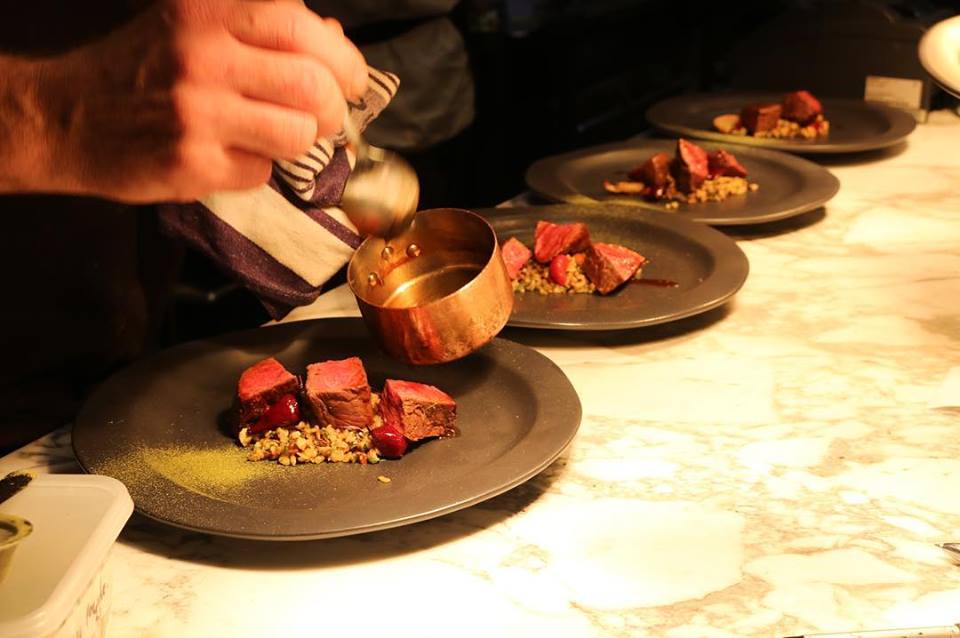Defining Umami – The MSG conundrum
What is Umami?
Umami is a Japanese word, from the words “umai” (delicious) and “mi” (essence) and translates to English as “pleasant savoury taste.” It was discovered by Japanese chemist, Kikunae Ikeda in 1908, so it is not something new. Ikeda was searching for the distinct flavouring that was present in dashi, a Japanese broth made from kombu (kelp). He determined that it was glutamic acid that was the cause. The glutamates, molecular compounds within glutamic acid, bind to specific tongue receptors creating that magical taste sensation in your mouth. Ikeda went on to produce umami in the form of monosodium glutamate (MSG) to substitute this flavour. The production of this began in 1909 and was sold as the ‘essence of taste’.
What exactly is “umami”? Why was I not taught about it at school when I was learning about the four tastes: sweet, salt, sour and bitter? Umami is the fifth taste that was officially recognised in 1990. However, there is more to it than that…..
It was not until 2006 that neuroscientists in America were able to locate taste-bud receptors for umami and further validate its existence. So, it has only been in the last decade or so that we have really begun to embrace the concept of umami.
The MSG conundrum
MSG seems to have had a fairly negative reputation for some time. This probably stems from the fact that people may have a hypersensitivity-type reaction to it in large doses, in the form of headaches, fatigue, general weakness and even nausea. It was often added to food in Chinese restaurants which coined the term “Chinese Restaurant Syndrome” in the 1960’s. It was essentially phased out in the 1990’s but many still associate MSG negatively in this way.
Perception is that MSG = bad, umami = good, yet they both do the same thing and can be found in many common foods including vegemite, parmesan cheese and tomatoes. This is why we add vegemite to toast, parmesan to pasta and tomato sauce to everything.
The effects of Umami
Umami can be hard to describe, it is that savoury, meaty, mouth-filling sensation you get. It is often perceived, not as a taste itself, but as an enhancement of other flavours. It is a savouriness that makes us salivate and leaves us wanting more, making it hard to resist. It is the reason we just want more of it.
Umami levels increase at a basic level by the ripening of fruits and vegetables, which is why a ripe tomato has a much higher level of glutamates than an unripe tomato. Umami is then accentuated by the processes of drying, curing, aging or fermentation. Dried shitake mushrooms contain more umami than fresh, prosciutto has more than uncured pork, aged beef has more than fresh beef and fermentation increases the umami in soy sauce and fish sauce.
Grape juice actually comes in the top 20 naturally occurring foods that contain umami. Factor in the accentuating effects of fermentation and it is hardly surprising then that wine contains plenty of umami. If you then take even riper fruit from a warmer climate such as the Barossa, then you have a natural recipe for “tastiness”.
"Understand flavours and you will understand Umami”.
Umami and Wine
Most of the literature that talks about matching food and wine does not really comment on umami, probably because it is only recently recognised. Really, the only issue with umami is that it will make tannin and bitterness in wine become increasingly more bitter. However, most foods that are high in umami are generally high in salt, and salt is very friendly when it comes to matching food and wine, helping to balance it out. According to Harvey Steiman in Essentials of Wine, “Burgundians choose their older wines for braised beef and chicken. The reduced tannin in older wines doesn’t clash with the umami.”
The Italians have also managed to find counterbalance in an umami rich Bolognese sauce with a wine such as Chianti, which has moderate tannin and higher acidity. It also partly explains why an aged Barolo, with its mellowed tannins and high acidity is a perfect match for umami rich truffle dishes. Conversely, one of the main reasons that Asian food can be challenging to pair with wine is that the majority of ingredients are so high in umami. Kelp, seaweed, fish sauce and soy sauce have some on the highest natural concentrations of umami of any foods.
Some umami enthusiasts, such as Tim Hanni MW, believe that the existence of umami make it possible to pair almost any wine to with any dish by making a few minor adjustments. A touch of salt, a splash of lemon juice, to balance the umami could be all it takes. As we gain a further understanding of umami, it is only going to help the relationship between food and wine and enhance our enjoyment of both.
Hamish Small and Luke Campbell
